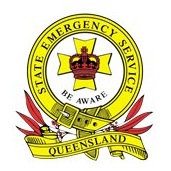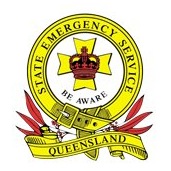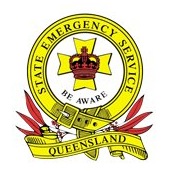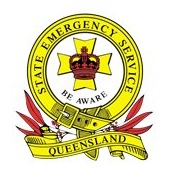Title Page
-
Asset Number
-
Asset Description
-
SES Group
-
Conducted on
-
Prepared by
-
Location
-
Personnel
Inspection - Hull
-
Check for dents, breaks, cracks, splits, holes, corrosion or other signs of damage or excessive wear in structural components or hull materials.
- Visual Inspection
- Physical Inspection
- Replacement Required
- Minor Repairs Required
- Service Required
- Not Applicable
-
Check for splits, gouges, holes, delaminating, un-peeling or other signs of damage or excessive wear in foam collars (where fitted).
- Visual Inspection
- Physical Inspection
- Replacement Required
- Minor Repairs Required
- Service Required
- Not Applicable
-
Check seats are securely fitted and in serviceable condition.
- Visual Inspection
- Physical Inspection
- Replacement Required
- Minor Repairs Required
- Service Required
- Not Applicable
-
Check condition of console (if fitted).
- Visual Inspection
- Physical Inspection
- Replacement Required
- Minor Repairs Required
- Service Required
- Not Applicable
-
Check condition of floor and deck areas.
- Visual Inspection
- Physical Inspection
- Replacement Required
- Minor Repairs Required
- Service Required
- Not Applicable
-
Check canopy is securely attached (if fitted).
- Visual Inspection
- Physical Inspection
- Replacement Required
- Minor Repairs Required
- Service Required
- Not Applicable
-
Check for loose fittings or rivets.
- Visual Inspection
- Physical Inspection
- Replacement Required
- Minor Repairs Required
- Service Required
- Not Applicable
-
Check for dents, breaks, cracks, splits, holes, corrosion or other signs of damage or excessive wear in structural components or hull materials.
- Visual Inspection
- Physical Inspection
- Replacement Required
- Minor Repairs Required
- Service Required
- Not Applicable
-
Check bungs fit correctly and threads are in good condition.
- Visual Inspection
- Physical Inspection
- Replacement Required
- Minor Repairs Required
- Service Required
- Not Applicable
-
Check boat signage and markings are intact and legible.
- Visual Inspection
- Physical Inspection
- Replacement Required
- Minor Repairs Required
- Service Required
- Not Applicable
-
Check scuppers open and close correctly (if fitted).
- Visual Inspection
- Physical Inspection
- Replacement Required
- Minor Repairs Required
- Service Required
- Not Applicable
-
Check drain passages are free from debris.
- Visual Inspection
- Physical Inspection
- Replacement Required
- Minor Repairs Required
- Service Required
- Not Applicable
-
Check for water in bilge and drain if necessary.
- Visual Inspection
- Physical Inspection
- Replacement Required
- Minor Repairs Required
- Service Required
- Not Applicable
-
Check security and condition of port and starboard safety ropes (if fitted).
- Visual Inspection
- Physical Inspection
- Replacement Required
- Minor Repairs Required
- Service Required
- Not Applicable
-
Wash hull and interior areas with fresh water.
- Visual Inspection
- Physical Inspection
- Replacement Required
- Minor Repairs Required
- Service Required
- Not Applicable
-
Check condition of lockers, hatches and storage areas.
- Visual Inspection
- Physical Inspection
- Replacement Required
- Minor Repairs Required
- Service Required
- Not Applicable
-
Check for chips, scrapes, peeling or wear in paintwork.
- Visual Inspection
- Physical Inspection
- Replacement Required
- Minor Repairs Required
- Service Required
- Not Applicable
-
Add photos of any issues.
Inspection - Motors, Machinery & Electrical
-
Inspect outboard motor for damage or deterioration.
- Visual Inspection
- Physical Inspection
- Replacement Required
- Minor Repairs Required
- Service Required
- Not Applicable
-
Check security and condition of transom bracket bolts.
- Visual Inspection
- Physical Inspection
- Replacement Required
- Minor Repairs Required
- Service Required
- Not Applicable
-
Check operation and security of cowling latch.
- Visual Inspection
- Physical Inspection
- Replacement Required
- Minor Repairs Required
- Service Required
- Not Applicable
-
Check outboard motor engine oil level.
- Visual Inspection
- Physical Inspection
- Replacement Required
- Minor Repairs Required
- Service Required
- Not Applicable
-
Check for oil leaks.
- Visual Inspection
- Physical Inspection
- Replacement Required
- Minor Repairs Required
- Service Required
- Not Applicable
-
Check propeller securing nut and cotter pin.
- Visual Inspection
- Physical Inspection
- Replacement Required
- Minor Repairs Required
- Service Required
- Not Applicable
-
Check for loose fittings or rivets.
- Visual Inspection
- Physical Inspection
- Replacement Required
- Minor Repairs Required
- Service Required
- Not Applicable
-
Check steering function.
- Visual Inspection
- Physical Inspection
- Replacement Required
- Minor Repairs Required
- Service Required
- Not Applicable
-
Check battery charge.
- Visual Inspection
- Physical Inspection
- Replacement Required
- Minor Repairs Required
- Service Required
- Not Applicable
-
Check battery isolator switch operation.
- Visual Inspection
- Physical Inspection
- Replacement Required
- Minor Repairs Required
- Service Required
- Not Applicable
-
Check power switch.
- Visual Inspection
- Physical Inspection
- Replacement Required
- Minor Repairs Required
- Service Required
- Not Applicable
-
Check operation of trim / tilt system.
- Visual Inspection
- Physical Inspection
- Replacement Required
- Minor Repairs Required
- Service Required
- Not Applicable
-
Check electric start (if fitted).
- Visual Inspection
- Physical Inspection
- Replacement Required
- Minor Repairs Required
- Service Required
- Not Applicable
-
Check throttle and gear shift operation.
- Visual Inspection
- Physical Inspection
- Replacement Required
- Minor Repairs Required
- Service Required
- Not Applicable
-
Check safety kill switch operation.
- Visual Inspection
- Physical Inspection
- Replacement Required
- Minor Repairs Required
- Service Required
- Not Applicable
-
Check condition of fuel tank(s).
- Visual Inspection
- Physical Inspection
- Replacement Required
- Minor Repairs Required
- Service Required
- Not Applicable
-
Check fuel tank vent operation.
- Visual Inspection
- Physical Inspection
- Replacement Required
- Minor Repairs Required
- Service Required
- Not Applicable
-
Check condition of fuel lines and couplings.
- Visual Inspection
- Physical Inspection
- Replacement Required
- Minor Repairs Required
- Service Required
- Not Applicable
-
Check for fuel leaks.
- Visual Inspection
- Physical Inspection
- Replacement Required
- Minor Repairs Required
- Service Required
- Not Applicable
-
Check cooling system water inlets for obstruction.
- Visual Inspection
- Physical Inspection
- Replacement Required
- Minor Repairs Required
- Service Required
- Not Applicable
-
Check operation of cooling system tell-tale.
- Visual Inspection
- Physical Inspection
- Replacement Required
- Minor Repairs Required
- Service Required
- Not Applicable
-
Check motor instruments are operating correctly.
- Visual Inspection
- Physical Inspection
- Replacement Required
- Minor Repairs Required
- Service Required
- Not Applicable
-
Check operation of electric bilge pump.
- Visual Inspection
- Physical Inspection
- Replacement Required
- Minor Repairs Required
- Service Required
- Not Applicable
-
Check operation and condition of compass.
- Visual Inspection
- Physical Inspection
- Replacement Required
- Minor Repairs Required
- Service Required
- Not Applicable
-
Check operation of GPS.
- Visual Inspection
- Physical Inspection
- Replacement Required
- Minor Repairs Required
- Service Required
- Not Applicable
-
Check operation of horn (if fitted).
- Visual Inspection
- Physical Inspection
- Replacement Required
- Minor Repairs Required
- Service Required
- Not Applicable
-
Check operation of navigation lights.
- Visual Inspection
- Physical Inspection
- Replacement Required
- Minor Repairs Required
- Service Required
- Not Applicable
-
Check operation of internal work / deck lights (if fitted).
- Visual Inspection
- Physical Inspection
- Replacement Required
- Minor Repairs Required
- Service Required
- Not Applicable
-
Check operation of navigation lights.
- Visual Inspection
- Physical Inspection
- Replacement Required
- Minor Repairs Required
- Service Required
- Not Applicable
-
Check operation of power outlets (if fitted).
- Visual Inspection
- Physical Inspection
- Replacement Required
- Minor Repairs Required
- Service Required
- Not Applicable
-
Wash off any salt / dirt deposit or debris from the outboard motor and flush out the exhaust outlet of the propeller and gear case.
-
Flush out the outboard motor cooling system with fresh water.
-
Spray power head with anti-corrosive agent as recommended by manufacturer.
-
Degrease and clean outboard motor power head.
-
Check spark plugs.
- Visual Inspection
- Physical Inspection
- Replacement Required
- Minor Repairs Required
- Service Required
- Not Applicable
-
Check and clean fuel filter.
- Visual Inspection
- Physical Inspection
- Replacement Required
- Minor Repairs Required
- Service Required
- Not Applicable
-
Check gearbox oil level and check for water contamination.
- Visual Inspection
- Physical Inspection
- Replacement Required
- Minor Repairs Required
- Service Required
- Not Applicable
-
Inspect water pump.
- Visual Inspection
- Physical Inspection
- Replacement Required
- Minor Repairs Required
- Service Required
- Not Applicable
-
Check sacrificial anode.
- Visual Inspection
- Physical Inspection
- Replacement Required
- Minor Repairs Required
- Service Required
- Not Applicable
-
Check battery fluid level.
- Visual Inspection
- Physical Inspection
- Replacement Required
- Minor Repairs Required
- Service Required
- Not Applicable
-
Check electrical wiring & leads for corroded joiners & terminals or loose or disconnected wires.
- Visual Inspection
- Physical Inspection
- Replacement Required
- Minor Repairs Required
- Service Required
- Not Applicable
-
Lubricate outboard tilt/trim & steering pivot points.
-
Is the outboard motor due for service? (last service approx or greater than 12 months)
-
Add photos of any issues.
Inspection - Equipment
-
Check operation of communications equipment (VHF marine and SES UHF radios).
- Visual Inspection
- Physical Inspection
- Replacement Required
- Minor Repairs Required
- Service Required
- Not Applicable
-
Check condition and security of aerials and antennas (if fitted).
- Visual Inspection
- Physical Inspection
- Replacement Required
- Minor Repairs Required
- Service Required
- Not Applicable
-
Check availability and condition lifejackets and PFDs.
- Visual Inspection
- Physical Inspection
- Replacement Required
- Minor Repairs Required
- Service Required
- Not Applicable
-
Check serviceability of fire extinguisher.
- Visual Inspection
- Physical Inspection
- Replacement Required
- Minor Repairs Required
- Service Required
- Not Applicable
-
Check condition of floor and deck areas.
- Visual Inspection
- Physical Inspection
- Replacement Required
- Minor Repairs Required
- Service Required
- Not Applicable
-
Check availability and condition of flares.
- Visual Inspection
- Physical Inspection
- Replacement Required
- Minor Repairs Required
- Service Required
- Not Applicable
-
Check operation and condition of torches.
- Visual Inspection
- Physical Inspection
- Replacement Required
- Minor Repairs Required
- Service Required
- Not Applicable
-
Check spare batteries are available and serviceable.
- Visual Inspection
- Physical Inspection
- Replacement Required
- Minor Repairs Required
- Service Required
- Not Applicable
-
Check operation of spotlights.
- Visual Inspection
- Physical Inspection
- Replacement Required
- Minor Repairs Required
- Service Required
- Not Applicable
-
Check availability and condition signalling mirror.
- Visual Inspection
- Physical Inspection
- Replacement Required
- Minor Repairs Required
- Service Required
- Not Applicable
-
Check availability and condition ‘V’ sheet.
- Visual Inspection
- Physical Inspection
- Replacement Required
- Minor Repairs Required
- Service Required
- Not Applicable
-
Check availability and condition of fire bucket / bailer.
- Visual Inspection
- Physical Inspection
- Replacement Required
- Minor Repairs Required
- Service Required
- Not Applicable
-
Check operation of manual bilge pump.
- Visual Inspection
- Physical Inspection
- Replacement Required
- Minor Repairs Required
- Service Required
- Not Applicable
-
Check suitability and condition of anchor, rope, chain, shackle.
- Visual Inspection
- Physical Inspection
- Replacement Required
- Minor Repairs Required
- Service Required
- Not Applicable
-
Check availability and condition bow, stern and mooring lines.
- Visual Inspection
- Physical Inspection
- Replacement Required
- Minor Repairs Required
- Service Required
- Not Applicable
-
Check condition of lockers, hatches and storage areas.
- Visual Inspection
- Physical Inspection
- Replacement Required
- Minor Repairs Required
- Service Required
- Not Applicable
-
Check availability and condition maps/charts.
- Visual Inspection
- Physical Inspection
- Replacement Required
- Minor Repairs Required
- Service Required
- Not Applicable
-
Check availability and condition boat hook(s).
- Visual Inspection
- Physical Inspection
- Replacement Required
- Minor Repairs Required
- Service Required
- Not Applicable
-
Check availability and condition of tool kit.
- Visual Inspection
- Physical Inspection
- Replacement Required
- Minor Repairs Required
- Service Required
- Not Applicable
-
Check availability and condition boarding ladder.
- Visual Inspection
- Physical Inspection
- Replacement Required
- Minor Repairs Required
- Service Required
- Not Applicable
-
Check availability and condition towing bridle.
- Visual Inspection
- Physical Inspection
- Replacement Required
- Minor Repairs Required
- Service Required
- Not Applicable
-
Check availability and condition of boat fenders.
- Visual Inspection
- Physical Inspection
- Replacement Required
- Minor Repairs Required
- Service Required
- Not Applicable
-
Check availability and condition of spare parts.
- Visual Inspection
- Physical Inspection
- Replacement Required
- Minor Repairs Required
- Service Required
- Not Applicable
-
Check availability and condition recovery board.
- Visual Inspection
- Physical Inspection
- Replacement Required
- Minor Repairs Required
- Service Required
- Not Applicable
-
Add photos of any issues.
Inspection - Trailer
-
Check axle and suspension for cracks, corrosion, broken springs, deterioration or loose securing bolts.
- Visual Inspection
- Physical Inspection
- Replacement Required
- Minor Repairs Required
- Service Required
- Not Applicable
-
Check trailer wheels and tyres for condition and pressure.
- Visual Inspection
- Physical Inspection
- Replacement Required
- Minor Repairs Required
- Service Required
- Not Applicable
-
Check that all wheel nuts are in place and properly tightened.
- Visual Inspection
- Physical Inspection
- Replacement Required
- Minor Repairs Required
- Service Required
- Not Applicable
-
Check trailer wheel bearings.
- Visual Inspection
- Physical Inspection
- Replacement Required
- Minor Repairs Required
- Service Required
- Not Applicable
-
Check coupling for corrosion, deterioration, loose bolts or worn parts.
- Visual Inspection
- Physical Inspection
- Replacement Required
- Minor Repairs Required
- Service Required
- Not Applicable
-
Check condition of trailer safety chains and shackles.
- Visual Inspection
- Physical Inspection
- Replacement Required
- Minor Repairs Required
- Service Required
- Not Applicable
-
Check condition and operation of trailer electrical plug.
- Visual Inspection
- Physical Inspection
- Replacement Required
- Minor Repairs Required
- Service Required
- Not Applicable
-
Check operation and condition of all lights.
- Visual Inspection
- Physical Inspection
- Replacement Required
- Minor Repairs Required
- Service Required
- Not Applicable
-
Check operation of trailer brakes.
- Visual Inspection
- Physical Inspection
- Replacement Required
- Minor Repairs Required
- Service Required
- Not Applicable
-
Check operation of reversing latch for override brakes.
- Visual Inspection
- Physical Inspection
- Replacement Required
- Minor Repairs Required
- Service Required
- Not Applicable
-
Check operation of park brake.
- Visual Inspection
- Physical Inspection
- Replacement Required
- Minor Repairs Required
- Service Required
- Not Applicable
-
Check availability and condition of fire bucket / bailer.
- Visual Inspection
- Physical Inspection
- Replacement Required
- Minor Repairs Required
- Service Required
- Not Applicable
-
Check adjustment, security and condition of all rollers and/or strakes.
- Visual Inspection
- Physical Inspection
- Replacement Required
- Minor Repairs Required
- Service Required
- Not Applicable
-
Check winch mounting bolts.
- Visual Inspection
- Physical Inspection
- Replacement Required
- Minor Repairs Required
- Service Required
- Not Applicable
-
Check winch cable/strap, hook, safety chain & shackles and cable/chain attachment points.
- Visual Inspection
- Physical Inspection
- Replacement Required
- Minor Repairs Required
- Service Required
- Not Applicable
-
Check operation of winch.
- Visual Inspection
- Physical Inspection
- Replacement Required
- Minor Repairs Required
- Service Required
- Not Applicable
-
Check operation and condition of extendable draw bar.
- Visual Inspection
- Physical Inspection
- Replacement Required
- Minor Repairs Required
- Service Required
- Not Applicable
-
Check condition and security of boat tie-down straps.
- Visual Inspection
- Physical Inspection
- Replacement Required
- Minor Repairs Required
- Service Required
- Not Applicable
-
Wash trailer with fresh water to remove any dirt, salt deposits or debris.
-
Apply grease to all greasing points.
-
Check brake cables, lines, fluid and associated linkages.
- Visual Inspection
- Physical Inspection
- Replacement Required
- Minor Repairs Required
- Service Required
- Not Applicable
-
Check brake pads / linings / disks / drums.
- Visual Inspection
- Physical Inspection
- Replacement Required
- Minor Repairs Required
- Service Required
- Not Applicable
-
Add photos of any issues.
Finalise Inspection
-
Are there any issues with the flood boat that have not already been captured in this inspection?
-
Are there any issues with the trailer that have not already been captured in this inspection?
-
Any other comments?
-
Add photos of any issues.
-
Sign that this inspection is true, correct & completed to the best of your ability.









